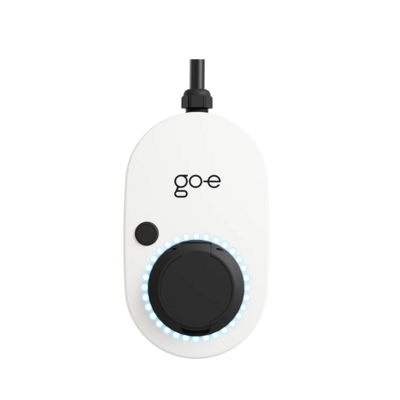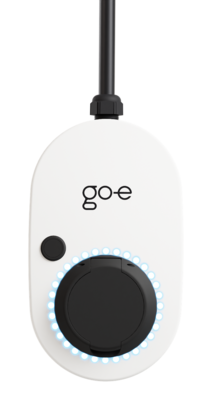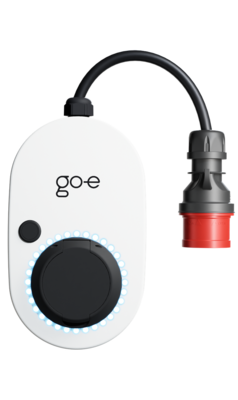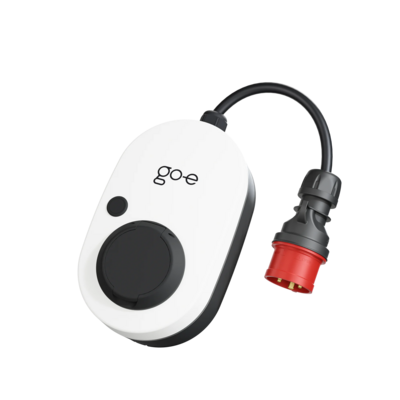What is a Wallbox and how does it work?
Last updated:
For electric car drivers, the question is of course trivial.
But if you are new to the topic of electric cars and electric car charging, it might be less obvious what a wallbox is and why you need one.
In this article, we explain what a wallbox is, how it works, what it can do and what you should look out for.
Do you want to allow Integration of youtube videos?
Allows the playback of videos, that are hosted on youtube.com. By allowing this feature, you accept the privacy agreement of google.
What is a Wallbox?
A wallbox is typically a compact, lightweight AC charging station that supplies power to electric cars. It makes charging electric cars more accessible, convenient and affordable for many people.
Wallboxes are mostly used in private or semi-public spaces, such as single-family homes, apartment buildings or businesses.
A wallbox usually hangs on the wall. However, it can also be mounted on a stand, for instance.
How Does a Wallbox Work?
When you connect your electric car to the wallbox with a charging cable, the car and the wallbox start to communicate with each other. The system checks how much current the connection can supply, how much the charging cable can handle and how much charging power the electric car can actually absorb.
The weakest link in the chain then ultimately determines the charging power, i.e. how much current the electric car can be charged with and thus how fast.
Some wallboxes visualise the status of the charging process or error messages with an LED display, such as the go-e Charger Gemini or Gemini flex with their LED ring.
The go-e Charger has a black push button next to the type 2 socket. You can use this to adjust the charging power if necessary, e.g. to charge more efficiently with your PV system. The charging power can also be adjusted in the go-e app, even steplessly.
Do you Need a Wallbox?
That depends on your needs and preferences.
However, in our experience, most electric car owners want to charge easily, cheaply and conveniently, and then there is usually no alternative to having their own wallbox and, above all, a smart wallbox.
A wallbox allows you to charge your electric car at the company car park, at the campsite or at home with your solar system, which is of course particularly exciting in times of high electricity prices. You can save time and money.
With the smart wallbox from go-e, for example, you can set the charging period in the go-e app. If you want the charging process to start at 2 a.m. and end at 6.30 a.m., simply set the time period in the app. This way you charge in a particularly sustainable way, which also pays off financially with night tariffs. So you can enjoy your coffee and breakfast in the morning and then drive to work relaxed.
Those new to electric cars may now be asking: "But can't I just plug my electric car into the socket at home?" The answer is yes, but there are a few things you should be aware of when charging at the regular socket.
One major disadvantage of charging from a two-pin socket is the charging time. It can take up to 24 hours to charge your electric vehicle. A wallbox is much faster. You can usually charge your car with a wallbox in 2-6 hours (depending on the battery status, maximum charging power, etc.).
Do you want to allow Integration of youtube videos?
Allows the playback of videos, that are hosted on youtube.com. By allowing this feature, you accept the privacy agreement of google.
What's the Size of a Wallbox?
Wallboxes come in a wide variety of sizes.
The go-e Charger Gemini, for example, weighs between 1.63 to 2.30 kilograms, depending on the variant, and is basically as small and compact as a shoebox. So our charging stations take up relatively little space. Wallboxes from some other manufacturers, on the other hand, can be significantly larger and heavier.
Mobile vs Stationary Wallbox
You can easily distinguish between mobile and stationary wallboxes. Both types of wallboxes are available with a charging capacity of up to 11 or up to 22 kW.
Do you want to allow Integration of youtube videos?
Allows the playback of videos, that are hosted on youtube.com. By allowing this feature, you accept the privacy agreement of google.
Mobile Wallbox: Use and Installation
A mobile wallbox, as the name suggests, is portable. This means that you can not only use the charging station at home, but also take it with you whenever you travel, go camping or visit friends and family. Simply unhook the wallbox from the wall mounting plate, place it in the car and drive off. Once you have arrived at your destination, plug the wallbox into a red CEE socket or, using an original go-e adapter, into another socket and the charging process will start.
Do you want to allow Integration of youtube videos?
Allows the playback of videos, that are hosted on youtube.com. By allowing this feature, you accept the privacy agreement of google.
Stationary Wallbox: Use and Installation
In comparison, a stationary wallbox is permanently mounted on the wall and is therefore only suitable for stationary operation. It must be wired to the building connection by an electrician.
Safety Features of a Wallbox
DC fault protection in the form of a type B RCD or DC protection module is required on the building side or in the wallbox.
The go-e Charger, for example, already has such a DC protection module integrated. It switches off the wallbox in the event of a fault current generated by the electric car. On the building side, an RCD type A must be installed and a miniature circuit breaker must be installed upstream. The local installation regulations must be observed.
Miniature circuit breakers with characteristic B or C for 16 or 32 amperes are permissible.
Functions: What can a Wallbox do?
What a wallbox can do depends… on the wallbox.
A simple wallbox
A simple wallbox communicates with the electric car during the charging process and adjusts the power to be supplied to the power requested by the car. But that's it.
An intelligent wallbox
Intelligent wallboxes, on the other hand, like the go-e Charger Gemini, can do much more. For example, the go-e app allows you to control the wallbox remotely and comes with many smart functions.
For instance, you can set how many kilowatt hours you want to charge in your electric car. When this value set by you is reached, the go-e Charger stops the charging process. This makes sense, for example, if you drive downhill a lot after charging and thus continue to charge the battery.
If you want to charge as cheaply as possible, you can define an electricity price limit in the go-e app. The go-e Charger knows the prices for the coming hours in advance for all flexible electricity tariffs stored by go-e. You can therefore determine the price limit below which the Charger should start charging. If the price is higher, charging will not take place. In the scheduled charging mode, you combine the price limit with a minimum amount of energy to be charged.
Smart Wallboxes from go-e
go-e Charger Gemini 11 kW

The compact wallbox for stationary use, at home or at the workplace. Simple installation, intuitive operation and smart comfort functions. Charging power from 1.4 kW to 11 kW. 1-phase or 3-phase charging.
go-e Charger Gemini 22 kW

The compact wallbox for stationary use, at home or at the workplace. Simple installation, intuitive operation and smart comfort functions. Charging power from 1.4 kW to 22 kW. 1-phase or 3-phase charging.
go-e Charger Gemini flex 11 kW

The intelligent wallbox can be used both stationary in the wall bracket and mobile. No electrician is required for the installation of the charging station. Charging power from 1.4 kW to 11 kW. 1-phase or 3-phase charging.
go-e Charger Gemini flex 22 kW

The intelligent wallbox can be used both stationary in the wall bracket and mobile. No electrician is required for the installation of the charging station. Charging power from 1.4 kW to 22 kW. 1-phase or 3-phase charging.


